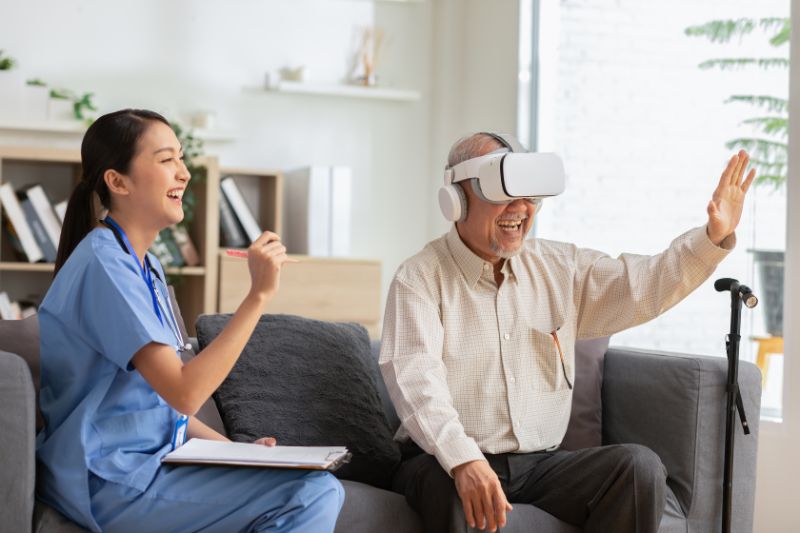Community Caregivers: Artists Lift AAPI Narratives
For Asian American artists and activists, stories are not just a medium for individual expression or entertainment but a tool for empowering communities and bringing about systemic change. A media briefing by Ethnic Media Services on October 20, illuminated the various innovative initiatives Asian American and Pacific Islander organizations are undertaking to strengthen their communities.
Speakers
![]()
- Kalani Tonga-Tukuafu, Director of Pasifika Enriching Arts of Utah (PEAU), the arts and culture division of PIK2AR
- Neeta Patel, Interim Executive Director, Asian Americans United
- Benny Lai, Executive Manager, Communications and Events, National Asian Pacific Center on Aging
- Dianara Rivera, Director of Narrative Strategy, Asian American Resource Workshop
- Jessica Eckerstorfer, Co Executive Director, The SEAD Project
A vivid picture of the potent “caregiver” role within these communities – a term encompassing not just individuals assisting someone with day-to-day needs, but also figures and organizations amplifying the collective voices and concerns of their communities.
Close affirmed, “Their work reflects and reinforces cultural identity at a time of rising xenophobia and lingering stereotypes that distort perceptions and inflicts harm on entire populations.” Imbued with a goal to challenge societal challenges and potential solutions, the community caregivers shared the floor to manifest their experiences and expectations from this formative role.
Dianara Rivera helped the audience understand the structure and purpose of the workshops organized by AARW. Rivera’s portrayal of the participatory process was an immersion into the world of collective narratives that are political and connected to community care. Giving space to the marginalized Asian American experience, local QT API leaders were invited to share personal narratives on community care, allowing the workshop participants to understand and empathize with their struggles and achievements.
Rivera shared a personal story about one workshop focused on exploring narratives of self-perception. The process involved discarding hurtful perceptions and embracing more affirmative self-images. “Imagine if we had been told good things about ourselves our entire lives?” asked Rivera, illuminating their approach to fostering positive identity-building in Asian American communities.
Kalani Tukuafu provided insights into another caregiving initiative. Her remarks revealed a glaring truth – most caregivers are unpaid and untrained family members or friends. “Only 26% of those surveyed have the support they need,” shared Tukuafu. Creating a platform for caregivers to share stories, Tukuafu hopes to offer “a deeper, more nuanced understanding of what it means to be a Pacific Islander living in the diaspora.”
Neeta Patel, further drove home the critical role of communications in these efforts. Yet, her account of stories of community struggles in Philadelphia highlighted the fact that not all stories evoke joy and celebration. Many narratives are also a testimony of collective resistance against injustices. Still, these stories serve an essential purpose: to unravel the unity and strength of the community amid adversities. Neeta explained, “We are using storytelling to get that word out, to share this common narrative and to understand that really only when we come together, can we stop these kinds of initiatives.”
Another individual championing the transformative power of storytelling is Jess Eckerstorfer. Eckerstorfer came to steer a unique cross-generational initiative featuring young ‘story collectors’ who sought stories from their elderly family members, creating a beautiful fusion of heritage and contemporary narratives. “We really wanted to work on creating a creative and holistic healing atmosphere for our elders because interactions with arts and healing spaces that are outside of medical professionalism are very rare,” she said.
Benny Lai offered another angle to the discussion, highlighting the efforts of KylinTV to produce video narratives, capturing the stories of caregivers and their experiences. He emphasized the importance of cultural sensitivity and language accessibility in crafting and sharing these stories. “The videos we produce are done in English, but we will consider adding Chinese, Korean, and other language subtitles to facilitate accessibility,” said Lai, underscoring his commitment to linguistic inclusivity.
In motion parallel to the currents of their stories, the AAPI organizations are continuing their fervent endeavours towards a more empathetic, compassionate, and just society. The speakers provided more than a mere exchange of dialogues and narratives. A true testament to the collective efforts of Asian American leaders in fostering unity, compassion, and resilient community spirit.
Their stories speak volumes, highlighting a unwavering commitment to community. The shift they are bringing about is emblematic of a new chapter of collective resilience, compassion and care. The speakers provided a roadmap for established and emerging Asian American communities nationwide, signaling the dawn of a new narrative, crafted by us, told by us, and cherished by us.


